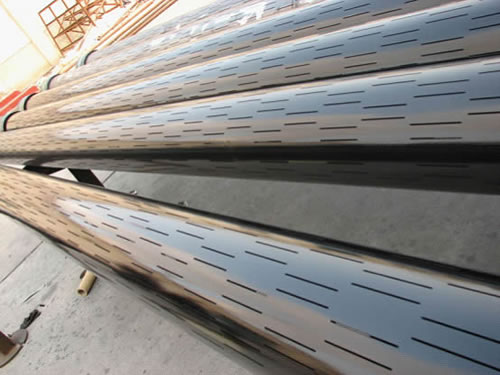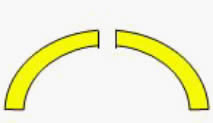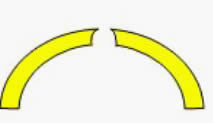

The slotted stainless steel tube /liner is used in oil exploration for preventing sand. It can stop 99% sand, decrease 80% of oil well heavy repair and increase the oil well's strength, integrality and stability of keeping off sand. With a simple slotted welded pipe structure, it is very effective. It has small cuts of 0.10-0.5 mm in the tube wall.
The slotted pipe works by allowing certain particle size coming through the surface with crude oil while keeping the bigger size sand staying outside, and thereby the anti-sand purpose is achieved.
Line slot pattern, staggered slot pattern, multiple staggered slot pattern.
Slotted liner or pipe has several unique advantages when compared with using of perforated pipes.
Detail Features:
The slotted liner is a robust and cost-effective solution for long completions or low productivity wells.
We offer straight and key stone slot in a wide range of slotting patters to satisfy the required open area.
High rigidity resisting scrape and abrasion, high intensity, anti-corrosion and even distribution.
Main technical data:
Material: stainless steel, carbon steel
Categories of pipes: petroleum casing pipe, oil pipe
Length of pipe (single): ≤15m
Outside diameter of pipe: 50 to 200mm
Wall thickness ≤16mm
Width of slot: (0.10-0.40)mm±0.03mm
Number of slots: according to order
Distribution types of slots: parallel, crisscross, spiral
Distance of slots: according to order

Slotted Liner Well Screen
Technical Details:
Slotted liner patterns illustration:
Three slot patterns are designed for different characteristics (shown below). Compared to staggered and straight slot patterns, gang slot pattern has superiorities over installation torque-loading capacity and substantially improves the liner’s resistance to lateral bucking and collapse pressures.
| Slotted Liner Patterns | ||
| Staggered Slotted Liner | Gang Slotted Liner | Straight slotted liner |
 |
 |
 |
| Staggered slots features alternate slot evenly spaced around the circumference with offset. | Gang slots feature multiple slots evenly spaced around circumference in a staggered pattern. | Straight slotted liner features slot columns spaced evenly around the circumference without offset. |
Slot profiles
Slot profile poses great importance on sand control and plugging performance. According to its different geometry, there are two slots – straight cut slot and seamed keystone slot. In almost horizontal completions in SAGD, seamed keystone slot performs much better than typical straight cut slot, and cost a little more.
| Slot Shapes | |
| Straight Cut Slot | Seamed Keystone Slot |
 |
 |
| Straight cut slots are designed for the same width through ID to OD. Straight slots feature more wear-resistant than seamed keystone slot. | Seamed keystone slot – width at the liner surface is narrower than width on the pipe interior. It features anti-plugging and self-cleaning. |
Slot density
Slot density refers to the number of slots per foot of pipe. It is determined by the open area of the pipe’s outer surface. Open area is an important factor of reducing the sand control capacity of a slotted liner. Generally speaking, open area ranges from 2% to 4%.
When the open area, the slot width and the diameter of the liner are determined, the slot density per foot can be calculated by the following formula:
N = |
12πD C |
100 W L |
N stands for slot density or the number of slots per foot
D stands for outside diameter of the liner in inch
C stands for open area, percentage
W stands for slot width in inch
L stand for the length of slot in inch
Example: For a 4.5” slotted liner, its open area is 3%, the slot width is 0.02 inch, the slot length is 1.5’, so what is the number of slot per foot?
According to the formula above, the required Number of slots is shown below:
N = |
12×π×4.5×3 |
= 172 |
100×0.020×1.5 |
Note: This formula is just a conventional calculation for either straight slot or seamed keystone slot.
Adverse factors on plugging of slotted liner.
Anti-plugging is a vital element for the evaluation of slotted liners. Four factors which are probably cause plugging are found.
Slot Profile
It is proven by more and more living examples that seamed keystone slot is superior to straight slot.
Formation wettability influence on slot plugging and sand production is especially apparent when the wetting phase is in motion.
Clay concentration
Usually, clay is the main factor of slot plugging. When both granular sand and clay are present, the possibility of severe plugging is extraordinarily high.
Fluid pH is another important factor of slot plugging. Lower pH working conditions have less plugging problems. HCl solution is a good resolution of removing existing plugs.